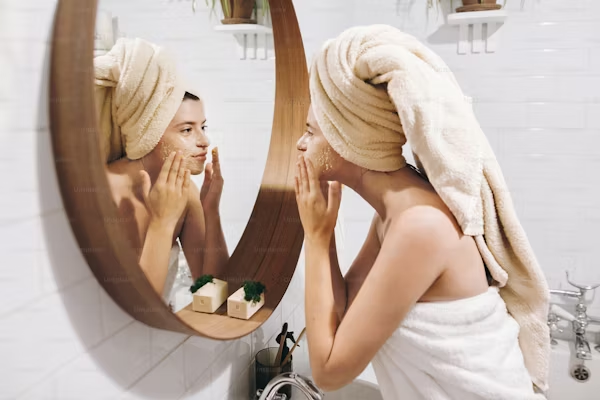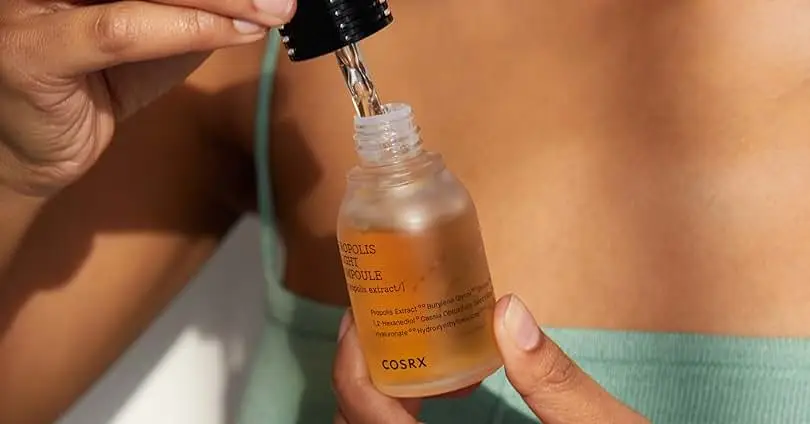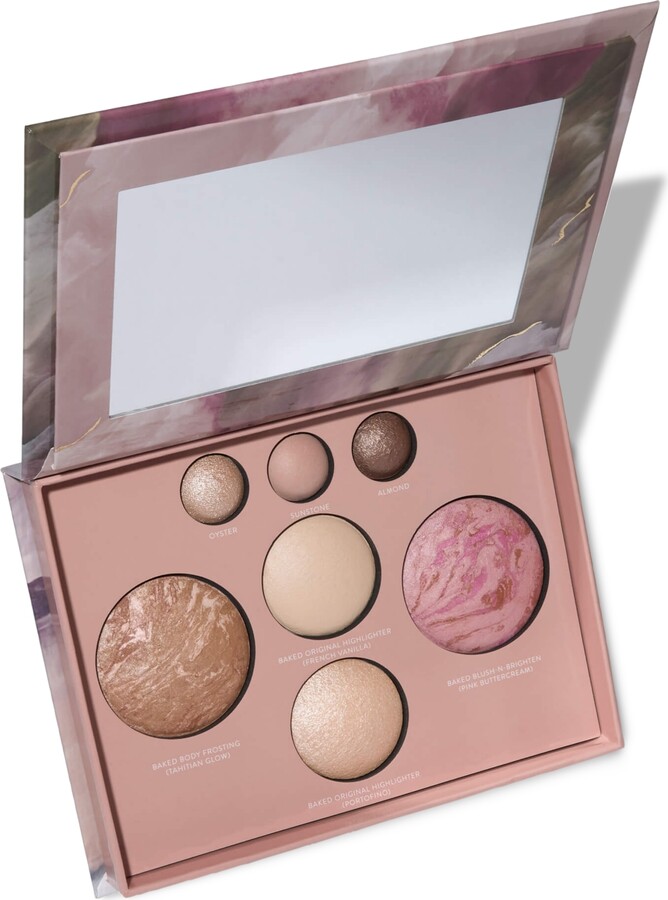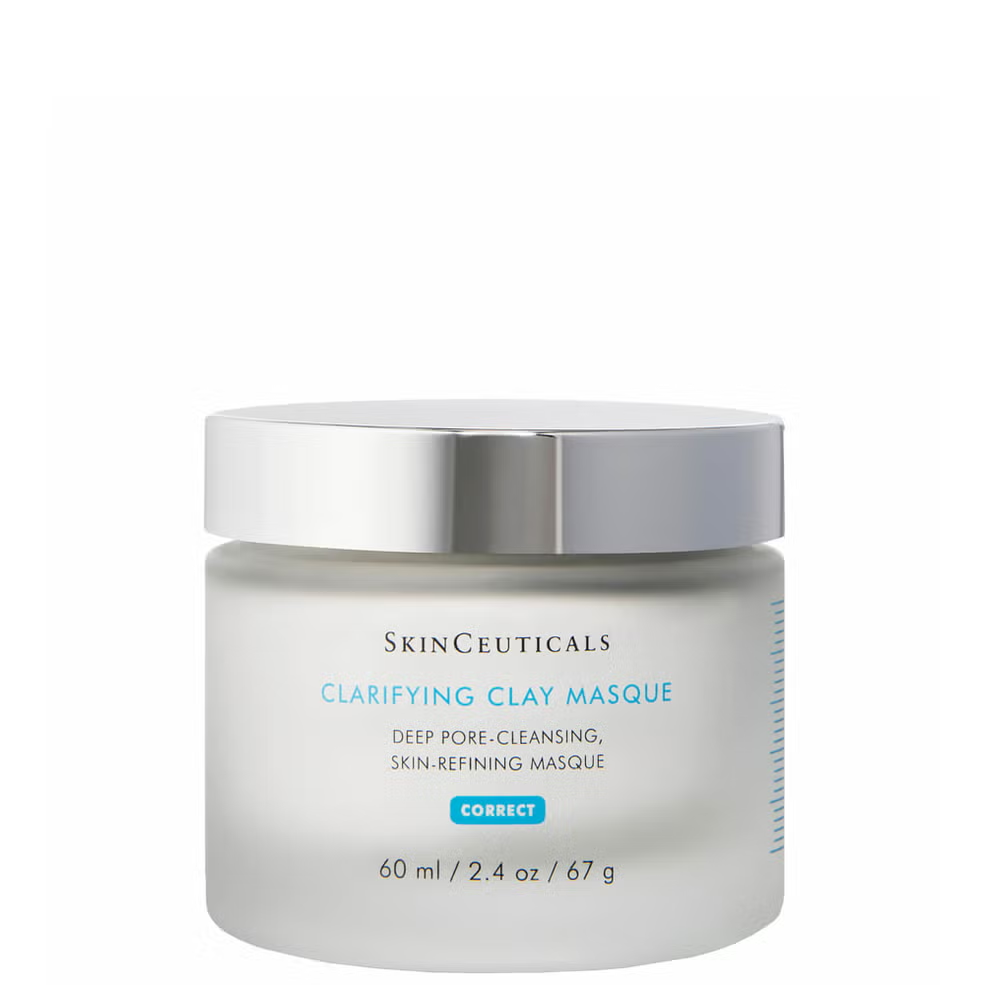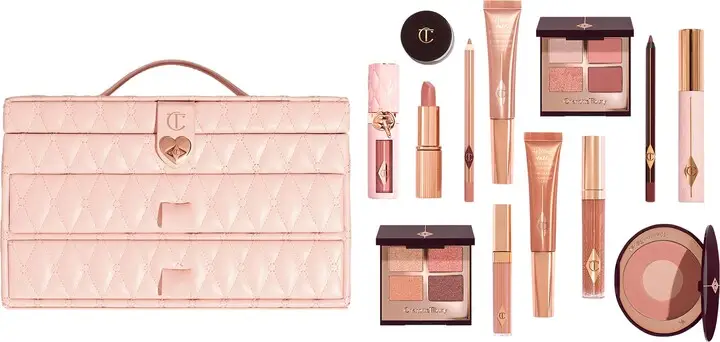Ever wonder whether that expensive skincare product is worth it or if it’s just another tale spun from the beauty myth machine? You’re not alone. From age-old wives’ tales to modern marketing ploys, beauty myths creep into our routines, whispering promises of flawless skin and perfect hair. But let’s face it, some of these stories sound like they came straight out of a fairy tale—and not the good kind. Separating fact from fiction is vital if you want real results. That’s why we’ve gathered insights from top experts to bust these myths wide open. Ready to discover the truth and say goodbye to beauty blunders? Let’s get started!
Myth 1: You Need Expensive Products for Great Skin
When it comes to skincare, the idea that you need to splash out on pricey products for a glowing complexion is as common as bedtime stories. But let’s set the record straight: a hefty price tag doesn’t guarantee magic in a bottle. Experts agree that what truly matters is the quality of the ingredients. The right ingredients can turn your skincare routine from a tangled mess of fairytales into a straightforward path to healthy skin.
The Ingredients that Matter
So, what are these magical ingredients that dermatologists swear by? It’s not pixie dust or unicorn tears; it’s good old-fashioned science-backed components. Here are some key players:
- Hyaluronic Acid: This is like a big gulp of water for your skin. It locks in moisture, giving your skin a plump and youthful look.
- Retinol: A trusted anti-aging hero that helps speed up cell turnover, revealing fresher skin underneath.
- Vitamin C: Think of this as an antioxidant powerhouse. It brightens your skin tone and fights off those pesky free radicals.
- Niacinamide: This all-star helps reduce redness and inflammation while also improving the skin’s texture.
- Salicylic Acid: Known for its pore-clearing abilities, this ingredient is a must for keeping acne at bay.
These ingredients are the true VIPs of skincare. It’s not about how much you spend; it’s what your products are doing behind the scenes.

Affordable Alternatives
You might be thinking, “Great, but aren’t the good products still expensive?” Not necessarily! You can find plenty of budget-friendly options that don’t compromise on quality. Here’s a list of some wallet-friendly favorites:
- The Ordinary Hyaluronic Acid 2% + B5: Packed with skin-loving hydration, this serum is a splash of freshness without the splurge.
- CeraVe Resurfacing Retinol Serum: With encapsulated retinol, this product smooths uneven skin texture without emptying your wallet.
- TruSkin Vitamin C Serum: Affordable, effective, and perfect for brightening up your day along with your skin.
- The Inkey List Niacinamide: This formula tackles oil and blemishes while keeping your pockets light.
- Neutrogena Oil-Free Acne Wash: Featuring salicylic acid, this classic keeps breakouts at bay without breaking the bank.
There’s no need to believe in the myth that great skin equals expensive products. The real truth is in the powerful ingredients and smart shopping choices. Why not give these budget-friendly gems a try and see for yourself?
Myth 2: Oily Skin Doesn’t Need Moisturizer
Did you ever think your oily skin was like a waterfall of its own? Overflowing with moisture so much that it doesn’t need a drop of hydration? Think again! Experts are here to flip that idea right on its head. Let’s break down why even oil-slick skin needs moisturizer love.
The Importance of Hydration
Imagine your skin as a garden. Just because it’s got a little too much rain doesn’t mean it won’t benefit from a nice drink of water now and then. Oily skin may feel slick, but skipping on moisturizer can actually make things worse. When oily skin lacks proper hydration, it might overcompensate by producing even more oil, like a factory in overdrive.
Hydration helps balance this oil production. Moisturizers act like a seal, locking in water and keeping your skin’s moisture barrier happy. Without this barrier, your skin can become dehydrated, which is just a fancy word for parched. Parched skin can lead to clogged pores and even more oil, which is sort of like adding fuel to a fire, or in this case, a shine. Keeping your skin hydrated might even help it chill out and slow down on all that oil production.
Choosing the Right Moisturizer
Now that you know your skin is just a thirsty garden, it’s time to pick the right fertilizer. Not all moisturizers are created equal, and oily skin needs one that’s just right—like finding that perfect pair of shoes.
Here are some tips to help you choose:
- Lightweight Formulas: Keep it light, like a breeze on a warm day. Gel-based moisturizers are often a good match because they hydrate without heaviness.
- Non-Comedogenic Products: Look for this magic word on the label. It means the product won’t clog your pores, which is essential for keeping that pesky acne at bay.
- Oil-Free Options: Your skin has enough of its own oil. Opt for oil-free moisturizers to maintain balance.
Moisturizing oily skin isn’t just about slathering on any cream. It’s about selecting a product that keeps your skin’s natural glow without turning it into an oil slick. So, next time you reach for that moisturizer, remember: even your skin’s waterfall needs a good guide.
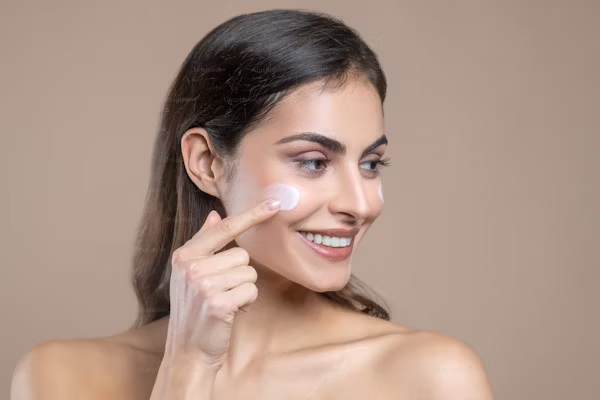
Myth 3: Natural Means Safe
Does “natural” always mean safe? If you’ve ever thought this, you’re not alone. It’s easy to assume that anything coming from Mother Nature is all rainbows and unicorns. But the reality is that natural doesn’t automatically equate to harmless. So, let’s dig into the facts and explore why some natural ingredients might not be as safe as advertised.
Understanding Natural Ingredients
When it comes to natural ingredients, we often think of them as pure and benign, like a walk in a sunny park. However, studies have shown that even the most innocent-sounding components can pack a punch. Just like a bee sting, they may surprise you with unexpected risks.
For instance, essential oils, popular for their aromatic charm, can cause skin irritation or allergic reactions in some people. A study from the American College of Healthcare Sciences highlighted that natural plant extracts, such as pennyroyal oil, while hailed for their herbal benefits, can be toxic if not used correctly.
Consider this natural ingredient lineup:
- Aloe Vera: Soothing on sunburn, yes, but it might cause skin irritation for some.
- Tea Tree Oil: Known for its antibacterial properties, yet it can lead to allergic reactions.
- Arnica: Often used for bruises, it may cause eczema in sensitive individuals.
These examples show that natural isn’t synonymous with safe. It’s all about how they’re used and how your body reacts.
The Role of Regulation
You might think, “Well, someone must be watching over these products, right?” Unfortunately, natural products often slip through the regulatory cracks. Unlike synthetic products, natural cosmetics and skincare don’t always undergo FDA approval before hitting the shelves. This lack of oversight can sometimes leave consumers in the dark about potential hazards.
In the US, the FDA doesn’t routinely test personal care products. That means companies are not required to prove their products’ safety or efficacy before selling them. It’s much like driving a car without a seatbelt—the risks might not be immediately obvious but can be significant.
What does this mean for you?
- Always read labels and check for allergens.
- Look for third-party certifications for added assurance.
- Research products and ingredients before using them on your skin or hair.
By staying informed and cautious, you can safely navigate the world of natural products. Remember, the key is not to assume safety based on a single word but to be a savvy consumer armed with knowledge. Don’t let the term “natural” cloud your judgment—be wise and watchful.
Myth 4: You Should Exfoliate Daily
Exfoliation is like giving your skin a little pep talk—it helps remove dead skin cells and lets your fresh, glowing skin take the stage! But is exfoliating every day really necessary, or could it actually do more harm than good? Let’s break it down and bust this beauty myth for good.
Types of Exfoliation
When we talk about exfoliating, there are two main stars in the lineup: physical and chemical exfoliants. Each has its own superpower and they need to be used wisely.
- Physical Exfoliants: Think of these as your skin’s personal scrub brush. They include scrubs with tiny granules, brushes, or cloths that manually buff away dead skin. While they can make your skin feel smooth, they can also be too harsh if used too much, leading to irritation.
- Chemical Exfoliants: These aren’t as scary as they sound! They use acids like AHAs (alpha hydroxy acids) and BHAs (beta hydroxy acids) to dissolve dead skin cells. Imagine them as hardworking little elves that gently do the job without the need for scrubbing. They can be great for sensitive skin if chosen correctly.
Frequency of Exfoliation
So, how often should you cheer on your skin with exfoliation? It depends on your skin type, and experts have some handy tips for finding the perfect rhythm.
- Oily Skin: If your skin is like a constant oil slick, exfoliating 2-3 times a week can help keep things balanced. But going overboard can strip your skin of its natural oils, making your oil glands work overtime.
- Dry or Sensitive Skin: Handle with care! Once a week is usually enough to keep your skin happy without turning it into a red, irritated mess. Always listen to what your skin tells you—it’s wiser than you think!
- Normal or Combination Skin: You’re in the Goldilocks zone. Exfoliating 1-2 times a week is generally “just right,” helping maintain a smooth complexion without overdoing it.
Over-exfoliating is like fast-forwarding through your favorite movie—you’ll miss the best parts of your skin’s natural process, leading to redness, irritation, and even breakouts. Experts emphasize: less is often more. By tailoring your exfoliation routine to your skin type, you ensure your skin stays luminous and healthy without any unwanted drama. Share these insights with your friends and watch their skin woes vanish like magic!
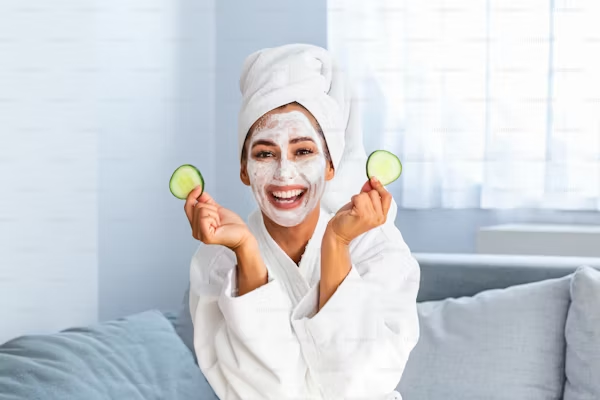
Myth 5: Sunscreen is Only for Sunny Days
It’s time to bust the myth that sunscreen is only necessary when the sun is blazing. Think of sunscreen like your skin’s best friend—it’s there to protect you no matter what. Just because there’s a bit of cloud cover doesn’t mean you should skip it. Let’s explore why sunscreen deserves a spot in your daily routine.
UV Rays and Skin Damage
Did you know that UV rays are like sneaky ninjas? Just because you can’t see them doesn’t mean they’re not there. They can penetrate clouds and still cause harm. About 80% of UV rays can make their way through clouds. This means those seemingly harmless overcast days aren’t as innocent as they appear. When UV rays hit your skin, they can cause damage, increase aging, and even lead to skin cancer. So, don’t let cloudy skies fool you. Protecting your skin from these harmful rays is crucial every single day.
Sunscreen Application Tips
Now that you know why it’s important, how do you use sunscreen like a pro? Here are some expert tips to make sure you’re getting the most protection:
- Choose the Right SPF: Opt for at least SPF 30 for everyday use. This ensures you’re blocking out 97% of the UVB rays.
- Apply Generously: Most people don’t use enough. Imagine trying to spread a dollar-sized amount over your entire body—sounds tough, right? Use a shot glass worth for your body and a nickel-sized amount for your face.
- Don’t Forget the Details: Hit often-missed spots like your ears, the back of your neck, and even your lips. Yes, they need love too!
- Reapply Often: Sunscreen isn’t a one-and-done. Reapply every two hours, especially if you’re swimming or sweating.
- Check the Expiration Date: Like milk, sunscreen goes bad. Make sure yours isn’t expired to guarantee it’s working at its best.
By following these tips, you’ll be giving your skin the protection it deserves. Sunscreen is your skin’s loyal shield, ready to defend against UV rays, come rain or shine. So next time you step outside, even on a cloudy day, make sunscreen your go-to accessory.

Myth 6: Makeup Causes Acne
Does that little beauty pouch in your bag secretly plan to wreak havoc on your face? Spoiler alert: It doesn’t! Many people blame makeup for acne, but that’s not the full story. Just like you wouldn’t blame a spoon for gaining weight, let’s get to the root of the problem and see what’s really causing the chaos on your skin.
Comedogenic vs. Non-Comedogenic Products
Understanding your makeup’s personality is crucial. Meet comedogenic and non-comedogenic—two long words that pack a punch in the skincare world.
- Comedogenic products are like those friends who always bring more friends to the party. They can clog your pores, leading to acne breakouts.
- Non-comedogenic products, on the other hand, are the party guests who know when to leave. They’re designed to not block pores and are less likely to cause acne.
So, how do you choose? Always check the label. If it’s non-comedogenic, your skin can breathe easier. Your face is like a garden, and you wouldn’t want weeds choking out the flowers.
Skin Care Routine Importance
Let’s chat about the star player: your skincare routine. Even the best makeup products can’t save you if your skincare game is weak.
- Cleanse: Every night, strip off the day. Think of it like giving your face a fresh start.
- Moisturize: Hydrated skin is happy skin. Skipping moisturizer is like leaving the cookie out when it’s half-baked—just not right!
- Exfoliate: Don’t overdo it, but give your skin a weekly scrub to get rid of dead cells. It’s like giving your favorite jacket a good dry clean.
- Spot Treatment: Got a pimple that just won’t quit? Use spot treatments to target those pesky blemishes without being harsh on the rest of your face.
Embracing a committed skincare routine can help you avoid unexpected breakout guests. Makeup isn’t the villain here; it’s how you prep and care for your skin that matters. Dive into the world of skincare as if you were on a treasure hunt, and you might just find the secret glow you’ve been looking for!
Myth 7: Drinking Water Clears Your Skin
We’ve all heard it—drinking a ton of water will magically transform your skin into a glorious, blemish-free canvas. While staying hydrated is important, does H2O really have the power to banish pimples? Let’s dive into what the experts say and explore how water fits into the bigger picture of skin health.
Hydration vs. Skin Health
Let’s be real: water isn’t a miracle worker for skin. Sure, staying hydrated is crucial for overall health, but it doesn’t single-handedly cure acne or erase imperfections. Imagine water as your skin’s personal cheerleader, not the coach calling the shots.
The Facts:
- Moisture Matters: Drinking enough water helps maintain skin’s hydration, which might make it appear plumper and more vibrant.
- Barrier Battle: Well-hydrated skin supports the protective barrier, which can fend off environmental nasties, but it’s not a cure for breakouts.
- Complex Causes: Acne and other skin issues often result from a mix of factors like hormones, diet, and genetics—not just a lack of water.
So, should you skip the water? Definitely not. But pairing hydration with a smart skincare routine is where the magic happens.
Balanced Diet for Skin
Think of your diet like the control board in the cockpit for your skin’s well-being. Certain foods are like premium fuel that keeps everything running smoothly.
Skin-Smart Foods:
- Fruits and Veggies: Rich in antioxidants, these are your skin’s best friends. Think berries, spinach, and carrots.
- Omega-3 Fatty Acids: Found in fish like salmon and walnuts, these fats help reduce inflammation, which can calm angry skin.
- Probiotics: These are the peacemakers for your gut. Yogurt and kombucha can support a balanced microbiome, which might reflect on your skin.
- Zinc and Selenium-Rich Foods: Nuts, seeds, and beans provide these minerals, essential for skin repair and regeneration.
Why not mix it up with a colorful salad or a handful of nuts for a snack? Your skin might just thank you with a healthy glow.
Remember, a clear complexion takes teamwork between what you eat, your skincare routine, and yes, a steady flow of water. It’s all about balance, not magic potions.
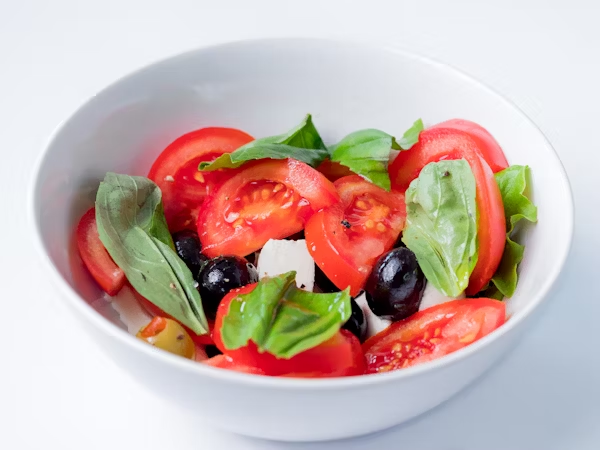
Myth 8: Hair Products Can Change Your Hair Texture
Here’s a little secret: no magical potion or potion-filled bottle can turn curly hair straight or fine hair thick. The texture of your hair is as unique as your fingerprint, baked into your DNA. So, what’s going on with all those hair products promising to change your locks? Let’s untangle this myth and explore how your hair is truly built.
Understanding Hair Anatomy
To decode the mysteries of hair texture, picture each strand as a tiny, strong rope. Here’s what makes up that rope:
- Cuticle: The outer layer that looks like scales on a fish. This part protects and gives your hair its shine.
- Cortex: Hidden under the cuticle, this is the core of your hair, where the magic of texture and color happens.
- Medulla: The innermost part, sometimes missing in finer hair but present in thicker strands.
Your hair texture—be it wavy, curly, or straight—is primarily dictated by the shape of the hair shaft, which is determined by your genes. Products can enhance and define texture, but they can’t fundamentally change it. It’s like trying on different clothes; they alter your look, but not who you are at your core.
Best Practices for Hair Care
Fancy hair products aside, maintaining healthy hair is simple if you stick to a few golden rules. Here are some tried-and-true methods to keep your mane in tip-top shape:
- Wash Wisely: Use shampoo to clean your scalp and conditioner to hydrate your strands. Over-washing can strip the hair of natural oils.
- Be Gentle: Pat your hair dry with a towel instead of rubbing it. Treat it as gently as you would a silk sheet.
- Cool it Down: Use the lowest heat setting on styling tools. Heat is like that frenemy who always ends up causing more harm than good.
- Trim Regularly: Haircuts every 6-8 weeks prevent split ends and promote healthier growth.
- Balanced Diet: Your hair thrives when you do. Fuel it with vitamins and nutrients from fruits, veggies, and proteins.
Remember, you can’t change your hair’s DNA, but you can embrace its natural beauty. Hair products are great for styling, but the real magic lies in how you care for your crowning glory every day. Love your hair for what it is—not what you think it should be.
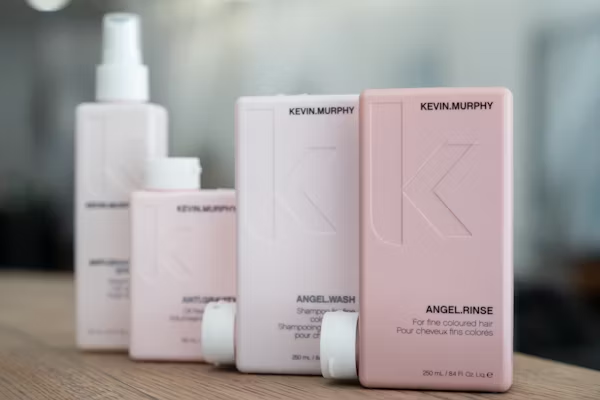
Myth 9: You Can Shrink Your Pores
The idea that you can shrink your pores often sounds as tempting as discovering a magical portal to a world of flawless skin. But let’s face it, your pore size is largely determined by your genes, and there’s no magic wand to make them vanish. However, you can work some skincare magic to make them appear smaller.
What Actually Affects Pore Appearance
While you can’t shrink pores permanently, you can take steps to make them look less noticeable. Here’s what factor plays a role:
- Oil Buildup: Excessive oil can create the illusion of larger pores. Keeping your skin clean is key.
- Dead Skin Cells: These can clog pores, making them look bigger. Regular exfoliation is your friend.
- Aging: As you age, skin loses elasticity, making pores appear larger. Using products to boost collagen can help.
- Sun Damage: UV rays break down collagen and elastin, leading to larger-looking pores.
By addressing these factors, you can smooth out the look of your skin and minimize pore appearance.
Products to Help Improve Texture
You don’t need to raid a sorcerer’s potion shop. Just look for these trusty skincare sidekicks:
- Exfoliants: Products with salicylic acid can work like a gentle broom, sweeping away dead skin cells and oil.
- Retinoids: These are skin superheroes, boosting collagen production and helping renew skin cells.
- Clay Masks: Think of these as vacuums for your pores, soaking up excess oil and impurities.
- Niacinamide Serums: This vitamin B3 wonder helps control oil, tighten pores, and even out skin tone.
- Sunscreen: Never leave your skin exposed. Every day, protect your face from harmful UV rays with a broad-spectrum sunscreen.
By incorporating these products into your daily routine, you can keep your skin looking fresh and your pores at bay. Give these skincare strategies a whirl and watch your skin transform, no magic wand needed.
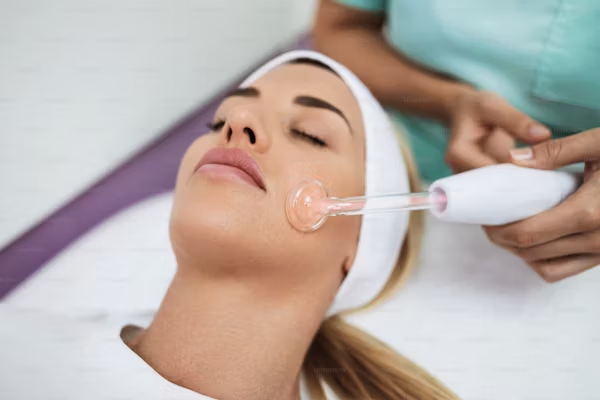
Myth 10: Tanning Beds are Safe if You Don’t Burn
Think tanning beds are your best friend because they don’t leave you resembling a lobster? Time to burst that bubble. While skipping sunburn might seem smart, tanning beds pack a sneaky punch of UV exposure that can lead to long-term skin damage. Let’s peel back the layers of this myth and uncover safer ways to glow.
Understanding UV Exposure
Tanning beds are like secret sun traps. When you hop in for that “healthy glow,” you’re exposing your skin to intense UV rays. These rays are like the sneaky villains of skincare, quietly working behind the scenes. Even if you don’t burn, the damage is happening. Here’s what you should know:
- Accelerated Skin Aging: UV rays from tanning beds work like time machines, speeding up skin aging. Wrinkles and sagging skin are not the souvenirs you want from your tanning sessions.
- Higher Cancer Risk: Regular exposure to tanning beds can increase the risk of skin cancer, including melanoma. Think of tanning beds as credit cards for your skin: the radiation debt collects without you realizing it, until it’s too late.
- Eye Damage: Those funky goggles may not be enough. Without proper protection, UV exposure can lead to cataracts. Your eyes are precious; no tan is worth risking them.
Safer Alternatives to Achieve Glow
Who says you need a tanning bed to shine? Achieving that sun-kissed look without the risks is not just a dream. It’s easy and safe with the right alternatives:
- Self-Tanners: With a range of lotions, mousses, and sprays, self-tanners give you a golden look minus the UV exposure. Easy to use, they can take you from pale to perfectly bronzed in hours.
- Bronzers: Consider them your makeup magic wand. A swipe of bronzer can highlight your features and give your skin a natural glow, all while keeping UV rays at bay.
- Gradual Tanning Lotions: These nifty lotions develop over time, giving you control over the depth of your tan. Start light and build your way up – it’s like painting your masterpiece!
By knowing the risks and exploring these alternatives, you keep control of your glow. Remember, it’s not just about looking good today; it’s about staying radiant for the long haul.

Banish those beauty myths to the shadows where they belong! Experts have busted the most common half-truths, from the idea that washing your hair daily is a crime, to the myth that drinking eight glasses of water a day will magically erase your wrinkles.
It’s time to embrace genuine insight and let science, not hearsay, guide your beauty routine. Get tips directly from the pros, and celebrate your unique beauty—snooze the snooze-worthy myths.
Let your beauty journey be inspired by facts, not fiction. What myth did you find most surprising, and which ones have you been living by? Share your thoughts below, and stay tuned for more truth-telling in our beauty series.
Beauty Category Summary: Sephora’s beauty gift sets are a highlight this season, packing premium picks for skincare lovers. From the Obagi Clenziderm MD Foaming Cleanser, designed to refresh oily skin, to SkinCeuticals’ Clarifying Clay Masque tackling clogged pores, there’s something for every routine. Sente brings its A-game with the Dermal Repair Cream, a hydration powerhouse, and the Cysteamine HSA Pigment & Tone Corrector to even out your complexion. Estee Lauder’s Advanced Night Repair Eye Concentrate Matrix adds some luxe to your night care, while the ultra-rich Elemis Pro-Collagen Marine Cream promises smooth, youthful skin. Musely offers targeted solutions like The Spot Cream and The Aging Repair Cream for hyperpigmentation and fine lines, and COSRX fans will love the glow-boosting Propolis Light Ampoule or Snail 96 Mucin Power Essence. For the body, Crepe Erase ups the ante with its Smoothing Body Repair Set. Thinking makeup? Holiday sets from Rose Inc and Laura Geller deliver essentials for a polished look, while Tatcha’s Liquid Silk Canvas Primer offers a flawless base. And yes, NuFACE remains the go-to for body sculpting. So, does frequency really matter? Hint: consistency is key. These picks are more than just beauty products—they’re confidence in a bottle.
Hey there! I’m Danille from Beautiful Over 40ish, and I’m so glad you’re here! Got a moment? Let’s jump into some styling magic. Forget the skim and stay for the sparkle. If you’re all about classy and timeless looks, you’re in for a treat. Love what you see? We’ve got loads more where that came from. Visit our site to refresh your look with tips that keep you polished and chic. It’s a treasure trove you’ll want to explore! https://beautifulover40ish.com/

Discover more from Beautiful over 40ish
Subscribe to get the latest posts sent to your email.
